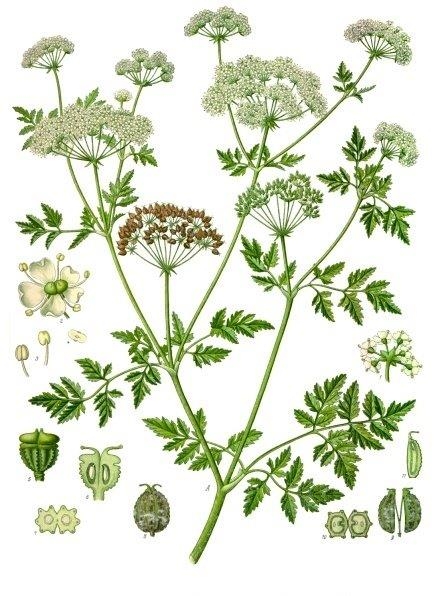The University of California Statewide Integrated Pest Management (IPM) program has recently released another within its popular Pest Notes series. This latest covers poison hemlock which is very common in both Mendocino & Lake Counties and is especially prevalent along the coast. The note can be downloaded as a pdf at http://www.ipm.ucdavis.edu/PDF/PESTNOTES/pnpoisonhemlock.pdf. I've excerpted a bit of the note below.
"Poison hemlock, Conium maculatum, is a member of the plant family Apiaceae, which contains a few important vegetable crops such as carrots, celery, and parsnip, and herbs such as parsley, cilantro, chervil, fennel, anise, dill, and caraway. It is a tall, invasive, highly poisonous weed that is sometimes mistaken for one of its crop relatives.
Poison hemlock was introduced from Europe as an ornamental plant, probably during the 1800s. It is now widely distributed in the western United States and is commonly found at lower elevations in regularly disturbed areas such as roadsides, ditch and stream banks, creek beds, and fence lines, as well as on the edges of cultivated fields. It can also invade native plant communities in riparian woodlands, floodplains of natural aquatic systems, and grazing areas, particularly pastures and meadows.
In grazing areas, poison hemlock can crowd out more desirable forage species, and its toxicity causes serious livestock losses when animals feed on fresh forage, harvested silage, or, to a lesser degree, contaminated hay. Silage does little to reduce the plant's toxicity. Poison hemlock is toxic to both humans and livestock, affecting the central nervous and reproductive systems.
Cases of human poisoning are comparatively rare and are generally associated with children using the hollow stems as flutes or adults mistakenly confusing poison hemlock with an edible plant such as parsley, parsnip, or anise. Sensitive people may experience contact dermatitis when handling this plant."
Management and various control methods are provided in the note. As is a description of the biology and growth patterns. While poisonings are rare, livestock producers should learn to recognize this plant and this pest note will help.
Author - County Director Mendocino & Lake/Livestock & Natural Resources Advisor - Emeritus